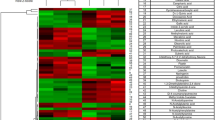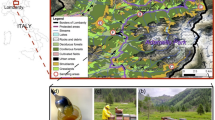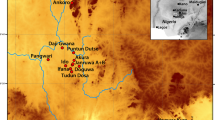Abstract
IT is well known that the main nectar flow in the London area comes from the limes (Tilia spp.) and to a lesser extent from the privet (Ligustrum). In some seasons privet predominates and the resulting honey is dark in colour with a slight greenish cast and has an unpleasant flavour with a bitter aftertaste. The honeys that were the subject of my note1 could not be mistaken for privet honey. The colour of the Ailanthus honey is a pale amber with a more definite green tinge than any other honey I have seen. Mr. Farmiloe2 has evidently misunderstood my description of the flavour. It is quite distinct from that of privet honey, which does not develop the muscatel flavour. The cat-like odour referred to is that of tom-cat urine and differs from both Ribes nigra leaves and the musky smell of mice. The odour of Ailanthus flowers is strong and similar to that of fresh elder flowers (Sambucus nigra), which changes when they wilt to the tom-cat odour. The odour of Ailanthus leaves is different from that of either fresh or wilted elder flowers, but it is irrelevant to this discussion. Another point confirming Ailanthus as the source of the cat-like and muscatel flavours is that there was no marked difference of flavour between the two honeys, although in 1944 there was nearly five times as much privet pollen present as in 1943.
This is a preview of subscription content, access via your institution
Access options
Subscribe to this journal
Receive 51 print issues and online access
$199.00 per year
only $3.90 per issue
Buy this article
- Purchase on Springer Link
- Instant access to full article PDF
Prices may be subject to local taxes which are calculated during checkout
Similar content being viewed by others
References
Melville, R., Nature, 154, 640 (1944).
Farmiloe, C., Nature, 155, 80 (1945).
Hyde, H. A., Museums J., 44, 145 (1944).
Author information
Authors and Affiliations
Rights and permissions
About this article
Cite this article
MELVILLE, R. Sources of London Honey. Nature 155, 206–207 (1945). https://doi.org/10.1038/155206a0
Issue Date:
DOI: https://doi.org/10.1038/155206a0
Comments
By submitting a comment you agree to abide by our Terms and Community Guidelines. If you find something abusive or that does not comply with our terms or guidelines please flag it as inappropriate.



